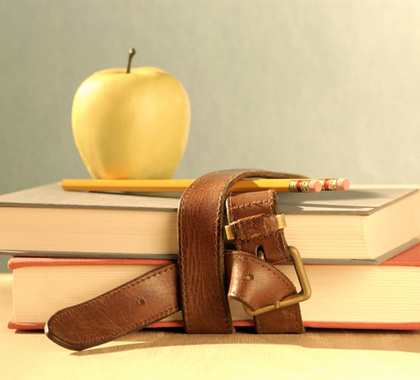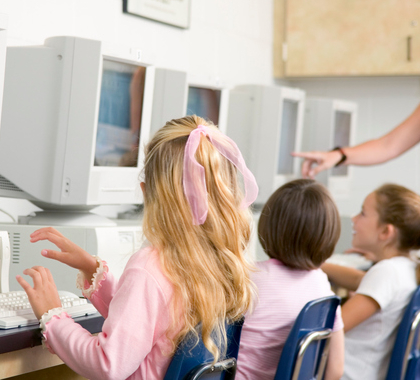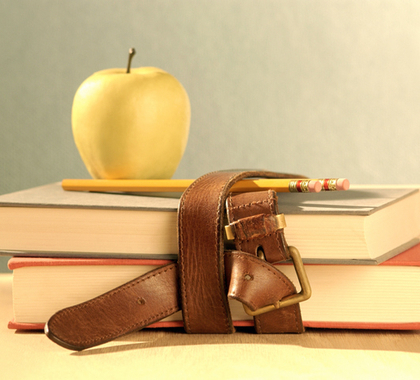The Centers for Disease Control and Prevention (CDC) has released the 2019 results of their biennial Youth Risk Behavior Surveillance System (YRBSS), and the responses show public schools in the Last Frontier are having a tough time keeping children safe.
YRBSS shows more than a quarter of Alaska high school students (25.5 percent) were bullied at school in 2019. This is the highest rate for any state in the nation and a jump from 2017, when bullying numbers were 23.3 percent. Another 19.4 percent were the victims of electronic bullying, a slight decrease from 2017’s 19.8 percent, but still the second-worst rate in the country.
Almost one out of ten students (9.3 percent) reported being in a fight on school property, a large jump from 2017’s 6.8 percent. Things are apparently so bad that 12.3 percent of Alaska high schoolers reported skipping school out of safety concerns, another jump from 2017, where rates were 11.5 percent. Most frighteningly, 25.3 percent said they had seriously considered attempting suicide (22.8 percent in 2017), while 19.7 percent actually attempted it (12.1 percent in 2017.)
The federal Every Student Succeeds Act (ESSA) permits students to transfer to another public school under ESSA’s Unsafe School Choice Option provision, but only if their current public school meets the state definition of a “persistently dangerous” school. Because states define unsafe schools so narrowly, fewer than 50 American public schools out of nearly 100,000 are labeled “persistently dangerous” each year.
Students should not have to wait years at a time or become victims of violent crime before their parents are allowed to transfer them to safer schools, which is current policy. That is why The Heartland Institute is proposing for states to create a Child Safety Account (CSA) program. CSAs are a type of education savings account (ESA) program for parents who feel, for whatever reason, their child’s school is unsafe. A CSA would empower parents to transfer their children immediately to the safe schools of their choice within or beyond their designated public school districts—including public district, charter, and virtual schools—as well as private and parochial schools. CSA funds could also be used to pay for homeschooling expenses.
(The full brief on Child Safety Accounts is available here.)
Under Heartland’s CSA program, students would be eligible for a CSA account if their parents had a “reasonable apprehension” for their children’s physical or emotional safety, including bullying, hazing, or harassment. Parents could also determine their child’s school isn’t safe after reviewing the incidents-based statistics schools would be required to report.
Research shows students at private schools are less likely than their public school peers to experience problems such as alcohol abuse, bullying, drug use, fighting, gang activity, racial tension, theft, vandalism, and weapon-based threats. There is also a strong causal link suggesting private school choice programs, such as CSAs, improve the mental health of participating students.
Copious other empirical research on school choice programs finds they offer families improved access to high-quality schools that meet their children’s unique needs and circumstances. Moreover, these programs improve access to schools that deliver quality education inexpensively. Additionally, these programs benefit public school students and taxpayers by increasing competition, decreasing segregation, and improving civic values and practices.
An annual survey by Phi Delta Kappa reveals more than one-third of American parents fear for their child’s safety at school. This number rises to 48 percent for parents earning less than $50,000 per year. This represents a large jump from 2013, when only 12 percent of respondents answered they feared for their child’s safety.
The Alaska public education system’s failure to protect children and provide parents with reasonable alternatives is precisely why this CSA program is so desperately needed. Every Alaska family should have the opportunity to remove their child from an unsafe school environment. With Child Safety Accounts, this would become reality.
The following documents provide more information about Child Safety Accounts and education choice.
Child Safety Accounts: Protecting Our Children through Parental Freedom
https://heartland.org/wp-content/uploads/documents/CSAccountsPB.pdf
In this Heartland Policy Brief, Vicki Alger, senior fellow at the Independent Women’s Forum and research fellow at the Independent Institute, and Heartland Policy Analyst Tim Benson detail the prevalence of bullying, harassment, and assault taking place in America’s public schools and the difficulties for parents in having their child moved from a school that is unsafe for them. Alger and Benson propose a Child Safety Account program, which would allow parents to immediately have their child moved to a safe school – private, parochial, or public – as soon as parents feel the public school their child is currently attending is too dangerous to their child’s physical or emotional health.
Indicators of School Crime and Safety 2018
https://nces.ed.gov/pubs2019/2019047.pdf
This report from the National Center for Education Statistics covers topics such as victimization, teacher injury, bullying and electronic bullying, school conditions, fights, weapons, availability and student use of drugs and alcohol, student perceptions of personal safety at school, and criminal incidents at postsecondary institutions. Indicators of crime and safety are compared across different population subgroups and over time. Data on crimes that occur away from school are offered as a point of comparison, when available.
The Effects of School Choice on Mental Health
https://papers.ssrn.com/sol3/papers.cfm?abstract_id=3272550
This study from Corey DeAngelis at the Cato Institute and Angela K. Dills of Western Carolina University empirically examines the relationship between school choice and mental health. It finds that states adopting broad-based voucher programs and charter schools witness declines in adolescent suicides and suggests that private schooling reduces the number of times individuals are seen for mental health issues.
The 123s of School Choice
https://www.edchoice.org/wp-content/uploads/2019/04/123s-of-School-Choice.pdf
This report from EdChoice is an in-depth review of the available research on private school choice programs in America. Areas of study include: private school choice program participant test scores, program participant attainment, parent satisfaction, public school students’ test scores, civic values and practices, racial/ethnic integration and fiscal effects.
A Win-Win Solution: The Empirical Evidence on School Choice (Fourth Edition)
http://www.edchoice.org/wp-content/uploads/2016/05/A-Win-Win-Solution-The-Empirical-Evidence-on-School-Choice.pdf
This paper by EdChoice details how a vast body of research shows educational choice programs improve academic outcomes for students and schools, saves taxpayers money, reduces segregation in schools, and improves students’ civic values. This edition brings together a total of 100 empirical studies examining these essential questions in one comprehensive report.
2018 Schooling in America Survey: Public Opinion on K–12 Education, Parent and Teacher Experiences, Accountability, and School Choice
https://www.edchoice.org/wp-content/uploads/2018/12/2018-12-Schooling-In-America-by-Paul-DiPerna-and-Michael-Shaw.pdf
This annual survey from EdChoice, conducted in partnership with Braun Research, Inc., measures public opinion and awareness on a range of K–12 education topics, including parents’ schooling preferences, educational choice policies, and the federal government’s role in education. The survey also records response levels, differences, and intensities for citizens located across the country and in a variety of demographic groups.
The Public Benefit of Private Schooling: Test Scores Rise When There Is More of It
https://object.cato.org/sites/cato.org/files/pubs/pdf/pa830.pdf
This Policy Analysis from the Cato Institute examines the effect increased access to private schooling has had on international student test scores in 52 countries. The Cato researchers found that a 1 percentage point increase in the share of private school enrollment would lead to moderate increases in students’ math, reading, and science achievement.
Nothing in this Research & Commentary is intended to influence the passage of legislation, and it does not necessarily represent the views of The Heartland Institute. For further information on this subject, visit School Reform News, The Heartland Institute’s website, and PolicyBot, Heartland’s free online research database.
The Heartland Institute can send an expert to your state to testify or brief your caucus; host an event in your state; or send you further information on a topic. Please don’t hesitate to contact us if we can be of assistance! If you have any questions or comments, contact Heartland’s government relations department, at [email protected] or 312/377-4000.




